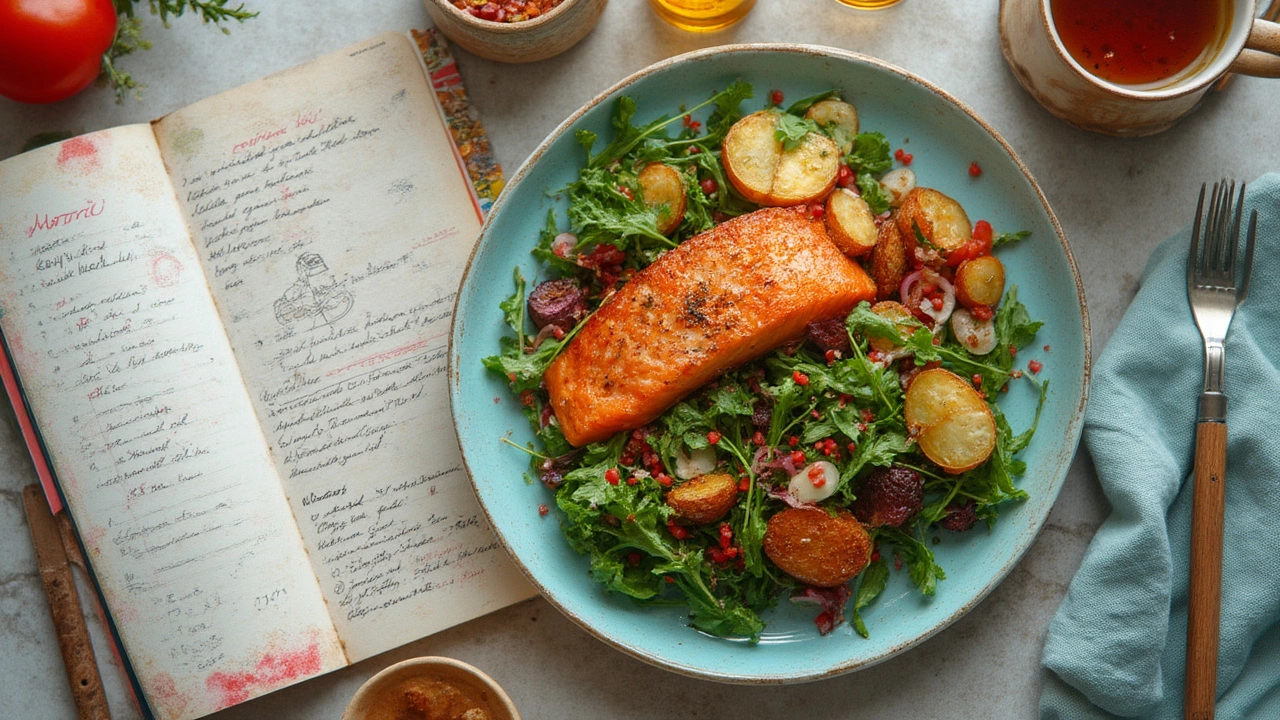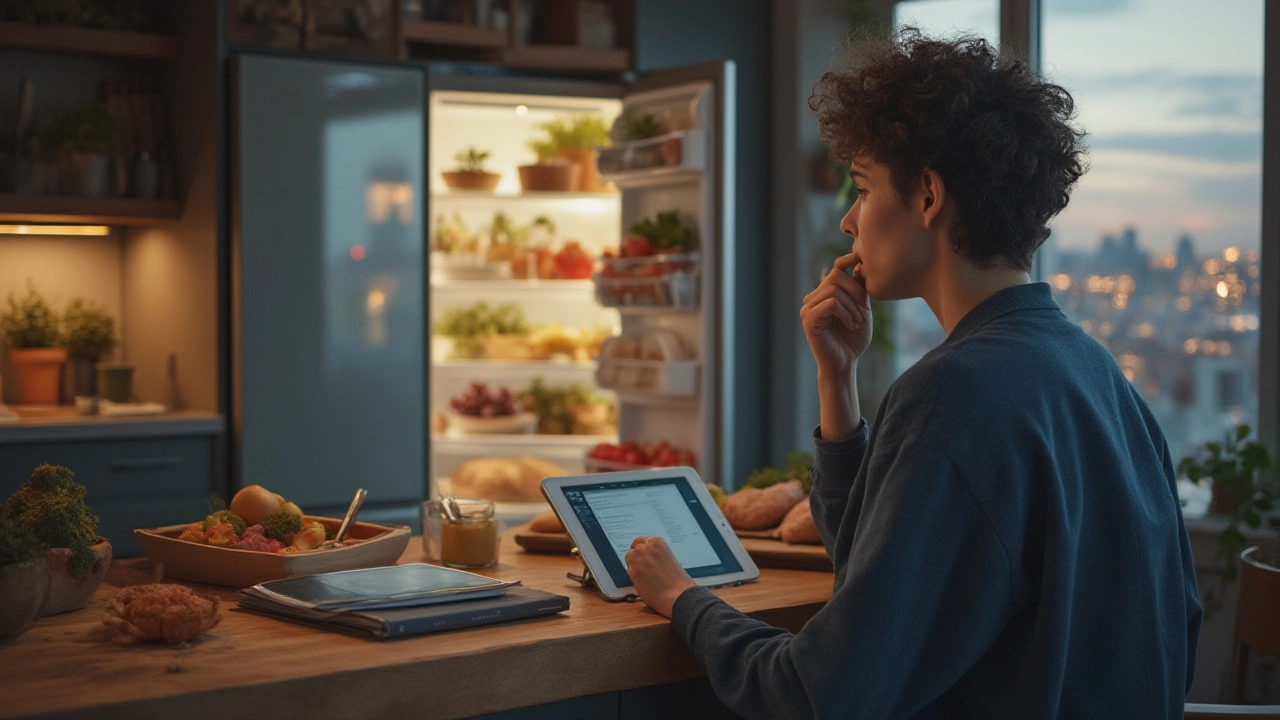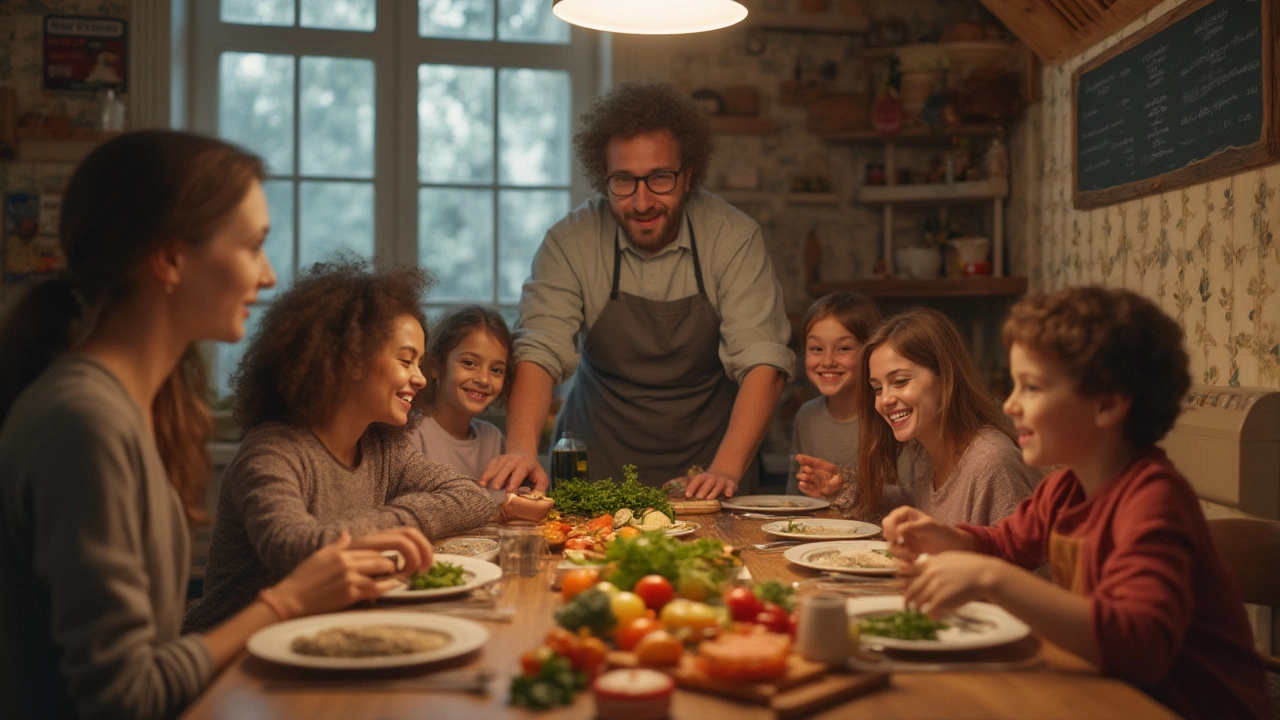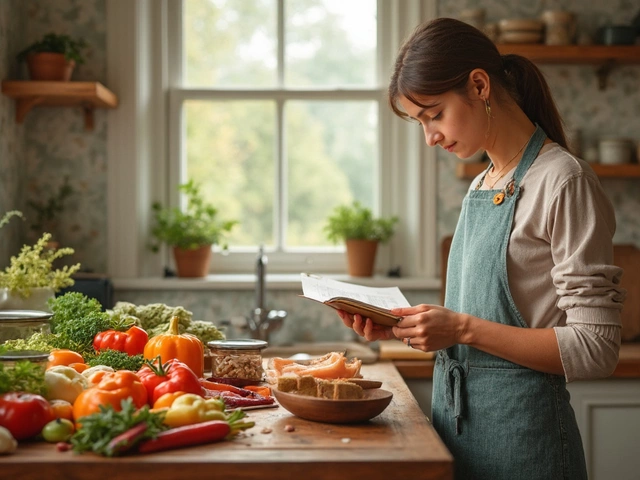There’s something oddly stressful about deciding what to eat for dinner. No matter how adventurous your lunches look or how organized your grocery list seems, the dinner question can sneak up on you every evening. Does anybody actually crave thinking about protein, fiber, and vitamins at 6:37 p.m. on a weeknight? Probably not. And while the internet throws out a thousand meal plans and fad diets, nobody really wants to live on kale and plain chicken forever. The real adventure starts with freeing yourself from food ruts and building a dinner habit that feels good, tastes better, and actually fits your life.
The Science (and Simplicity) of Building a Satisfying Dinner Routine
First off, let’s talk basics. Your body isn’t begging for the trendiest TikTok salad or an endless rotation of takeout. It wants fuel—protein for muscle, veggies for vitamins, complex carbs for energy, and healthy fats for flavor and fullness. Even the NHS (National Health Service) in the UK recommends aiming for a third of your plate as veg or salad, a third carbs like potatoes, rice, or pasta, and the rest with protein. Nothing fancy, just balance. One fascinating fact: a 2022 study published in the journal "Nutrients" surveyed 5,300 UK adults and found people eating more home-cooked dinners reported better moods, healthier weights, and fewer late-night snack attacks. Turns out, consistency—more than dietary perfection—actually improves well-being.
Switching up your plate can also help. Eating the exact same meal five nights in a row makes most people less likely to stick to a healthy habit. Our brains crave novelty, especially at the end of the day. Some registered dietitians call it "taste fatigue"—it can actually make you reach for dessert or snacks after finishing dinner. Building a flexible routine means having some favorite go-to dishes, but keeping some room to swap out veggies, try a new protein, or throw in a sauce you love. If it feels good, you’re more likely to stick with it.
And here’s something people overlook: what you eat for dinner affects your sleep. Heavy, fatty, or super-late dinners can raise your core body temperature and mess with deep sleep. A balanced meal, say grilled salmon, roasted sweet potato, and a side of steamed broccoli, will actually help your body relax, prevent middle-of-the-night cravings, and set you up for more even energy the next day. Want a quick trick? Try ending dinner with a handful of cherries; they’re one of the few natural sources of melatonin.
If you want numbers, here’s a look at the average nutritional breakdown for an ideal dinner:
| Macronutrient | Recommended Per Dinner* |
|---|---|
| Protein | 20-30g |
| Carbohydrates | 40-60g |
| Fibre | 8-12g |
| Fat | 10-20g |
*Based on a 2,000 calorie diet for adults. Your needs may vary depending on age, activity, and health goals.
You don’t need perfection every night. But small, consistent building blocks—like adding just one more veg to your plate or experimenting with a new grain—make a difference. That’s the secret sauce to a lasting dinner habit.

Making Dinner Practical: Meal Ideas, Smart Shortcuts & Swaps
Here’s the real-life problem: Most people don’t finish work, exercise, chores, and then feel like spending an hour prepping dinner. Tired brains rarely choose “the perfect meal.” But you can outsmart this by setting up a few tricks that make healthy dinners almost automatic—even when you’re staring blankly into the fridge or tired from your commute. Let’s keep it healthy dinner ideas real and easy.
First, templates work wonders. Pick a formula you love and swap ingredients as you go. Some super-easy ideas:
- Grain Bowl Night: Start with brown rice, quinoa, or couscous. Add roast chicken or tofu, pile on chopped veg (broccoli, roasted peppers, or spinach). Finish with avocado or lemon-tahini dressing.
- Pasta Night: Whole grain pasta + tomato sauce + lentils (for extra protein) + spinach thrown in at the end + olive oil drizzle.
- Sheet Pan Dinners: Toss veggies (like carrots and broccoli) and protein (salmon fillets, chicken thighs, or chickpeas) onto a tray. Roast with olive oil and spices. One pan, less fuss.
- Stir-fry Night: Sauté whatever veggies are left in the fridge, add some protein (shrimp, beef strips, tofu), and toss in soy sauce, garlic, and ginger over wholegrain noodles.
- Soup & Bread: Hearty lentil or chicken soup with crusty wholegrain bread. Add side salad for crunch.
Ingredients that save the day: Keep a stock of frozen veggies, mixed beans, canned tomatoes, whole grains, and a protein like eggs or tinned tuna. They last for ages and can be the basis for loads of last-minute dinners. Buy pre-chopped salad or broccoli slaw when you know your week will be busy. Nobody earns a medal for prepping every carrot by hand.
Boredom will kill your enthusiasm fast. One fix is to try themed nights (Taco Tuesdays, Curry Thursdays), or set a challenge like using a new spice or grain each week. You’ll love the variety, and it gives you a sense of adventure without costing a ton or eating out every night.
Batch cooking can save you from weekday dinner stress. Cook double portions of a healthy bean chili, soup, or roasted veg tray on the weekend, then freeze or chill in portions. When the week hits hard, you’ll have dinner almost sorted. You can also prep sauces—like pesto, yogurt and cumin, or spicy tomato—to dress up boring meals fast.
Still worried about nutritional balance? Here’s an easy way to check your dinner without apps or math: as you fill your plate, cover half with veg or salad, a quarter with protein, and a quarter with carb. That’s the “plate method,” and it’s seriously simple. Harvard’s School of Public Health recommends it for families and busy people alike. It works at home, at a takeaway spot, or with a frozen meal.
Here are some simple swaps to make any dinner a little healthier:
- Use brown rice or quinoa instead of white rice for more fiber.
- Swap creamy dressings for olive oil, mustard, or lemon juice-based sauces.
- Try roasted chickpeas or nuts as croutons to up your plant protein.
- Pick lean meats or plant-based proteins, or mix meat with beans to stretch both flavor and nutrition.
- Add a handful of greens to any hot meal—baby spinach wilts in seconds and packs a vitamin punch.
And for nights when only comfort food will do, go for it—just add a big side salad or steamed veg to balance out a cheesy pasta or pizza night. Progress, not perfection.

Finding Your Own Dinner Groove (And Why Food Isn’t Just Fuel)
Here’s where it all comes together: Dinner isn’t only about nutrition. It’s stress relief, social connection, and sometimes pure pleasure. Maybe you eat solo most nights, or you’re feeding a whole family with a picky toddler and a partner who “doesn’t like anything green.” The truth: There’s no universal dinner solution, but you can find your own groove with some trial and error—and a bit of self-compassion when things fall apart.
Start with what you love. If you adore curry, there’s no rule you can’t adapt it for weeknight ease—think chickpea and spinach curry blitzed in 20 minutes. Pasta-lover? Upgrade with roasted veg and a handful of toasted seeds for crunch. Prefer breakfast for dinner? Scrambled eggs and avocado toast with tomatoes never get old.
Don’t feel chained to Western dinner traditions either. In Japan, dinner often revolves around miso soup, rice, and fish. In the Mediterranean, dinners can be lots of small plates—hummus, olives, salad, roast veg, and grilled chicken. You’re not obligated to eat “meat and two veg” every night. Get inspired by world cuisines or even ask friends for their household staples—people love to share what actually works in real life.
Family dinners are proven mood boosters. According to a 2023 UK report by the Food Foundation, children who eat dinner with their families at least four nights a week have better grades and lower rates of depression. But even if you live alone or prefer a solo dinner, you can create your own rituals—like setting the table nicely, lighting a candle, or playing your go-to playlist as you eat. It makes dinner feel like more than just another task.
Stuck on deciding? Flip the usual question: Instead of “What should I have for dinner?” ask, “What sounds most satisfying right now?” Jot down five meals you know you love, and when decision fatigue strikes, rotate through that list. Even nutrition pros fall back on their hits—bean chili, stir-frys, one-pot pasta—when the dinner struggle hits.
Here are a few dinner inspiration prompts to get you started:
- What’s the quickest healthy meal I can make from what’s in my fridge right now?
- What’s my all-time comfort food, and how can I balance it out?
- Is there a recipe I’ve wanted to try but never had the nerve? Can I make it faster or easier?
- What’s one new veg or grain I could try this week?
If you ever feel stuck, you’re not alone—survey after survey finds dinner is the trickiest meal to plan, with nearly 60% of UK adults saying it causes stress at least once a week. Give yourself space to experiment. Even if one night is just beans on toast, you’re still on track. One good dinner sets you up for the next one, and tiny changes add up. Making dinner work for your health—and your sanity—shows genuine self-care. So build your own system, enjoy the journey, and remember, the best dinner is the one that fits your real life.







